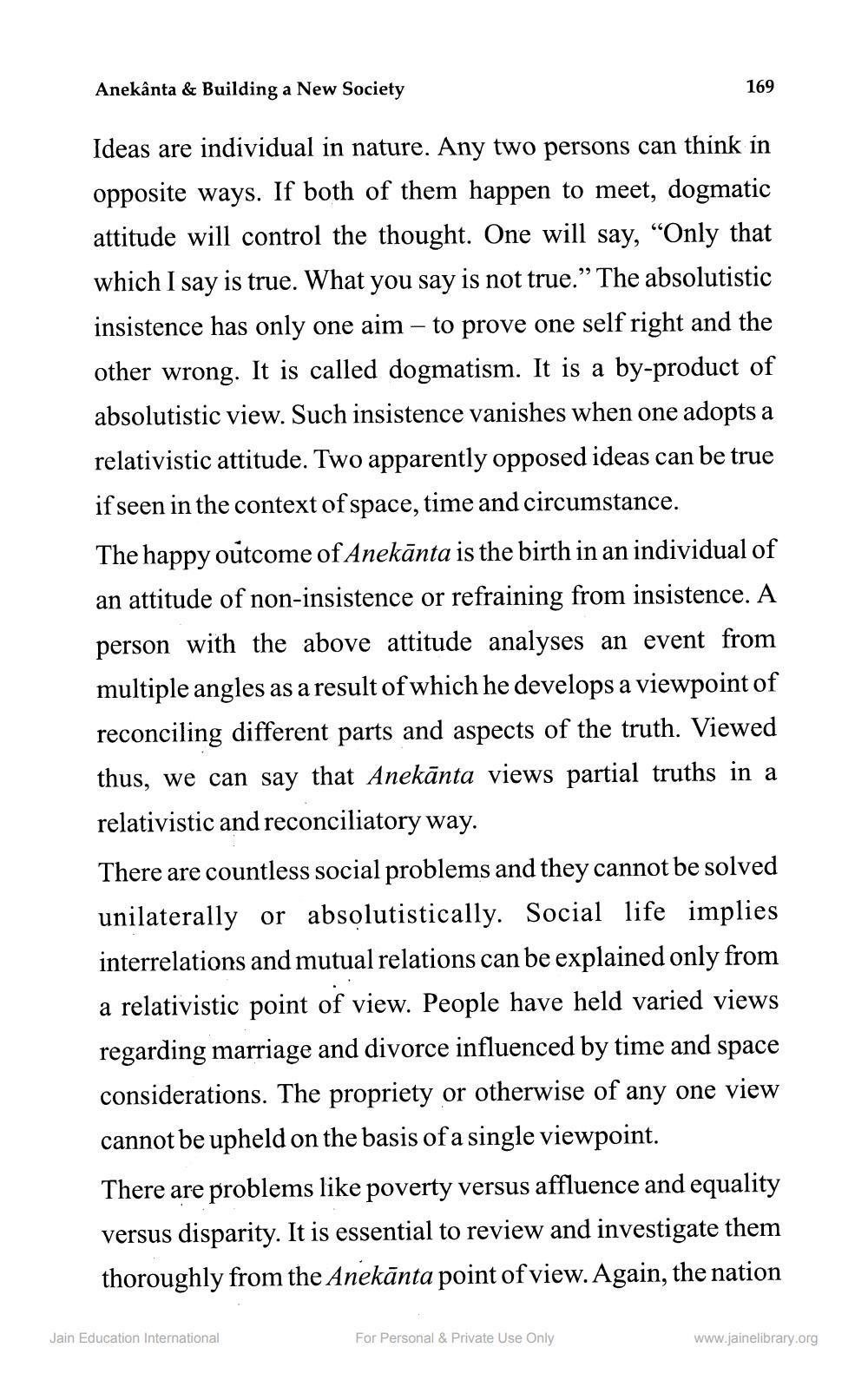________________
Anekânta & Building a New Society
169
Ideas are individual in nature. Any two persons can think in opposite ways. If both of them happen to meet, dogmatic attitude will control the thought. One will say, “Only that which I say is true. What you say is not true.” The absolutistic insistence has only one aim – to prove one self right and the other wrong. It is called dogmatism. It is a by-product of absolutistic view. Such insistence vanishes when one adopts a relativistic attitude. Two apparently opposed ideas can be true if seen in the context of space, time and circumstance. The happy outcome of Anekānta is the birth in an individual of an attitude of non-insistence or refraining from insistence. A person with the above attitude analyses an event from multiple angles as a result of which he develops a viewpoint of reconciling different parts and aspects of the truth. Viewed thus, we can say that Anekānta views partial truths in a relativistic and reconciliatory way. There are countless social problems and they cannot be solved unilaterally or absolutistically. Social life implies interrelations and mutual relations can be explained only from a relativistic point of view. People have held varied views regarding marriage and divorce influenced by time and space considerations. The propriety or otherwise of any one view cannot be upheld on the basis of a single viewpoint. There are problems like poverty versus affluence and equality versus disparity. It is essential to review and investigate them thoroughly from the Anekānta point of view. Again, the nation
Jain Education International
For Personal & Private Use Only
www.jainelibrary.org




